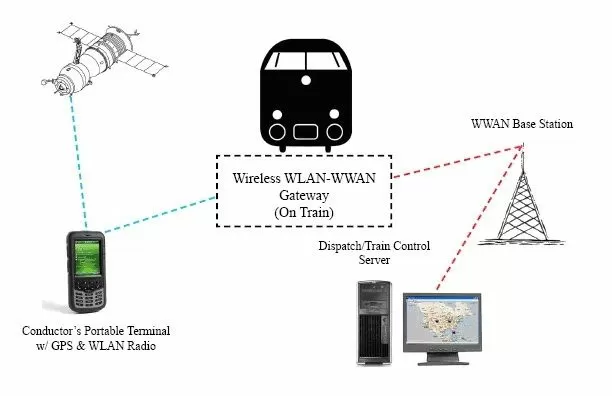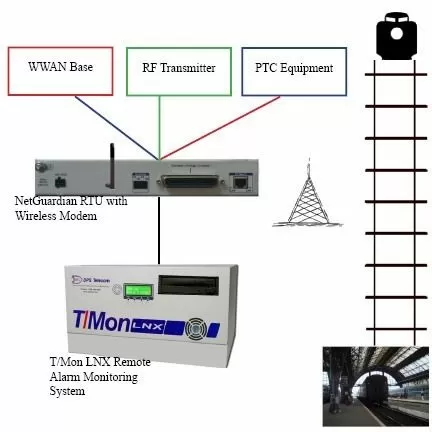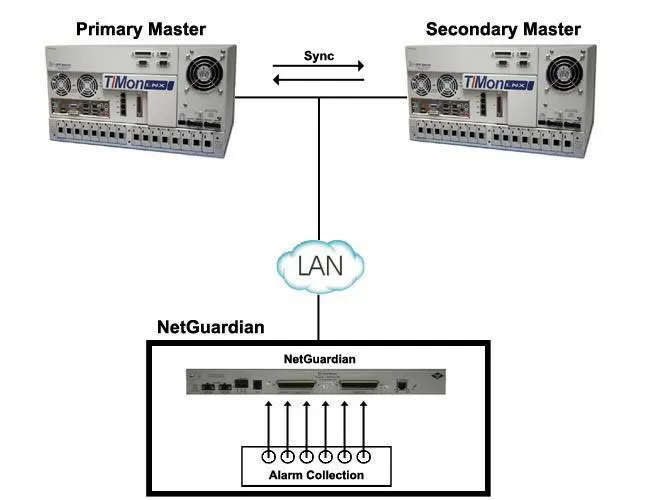Check out our White Paper Series!
A complete library of helpful advice and survival guides for every aspect of system monitoring and control.
1-800-693-0351
Have a specific question? Ask our team of expert engineers and get a specific answer!
Sign up for the next DPS Factory Training!

Whether you're new to our equipment or you've used it for years, DPS factory training is the best way to get more from your monitoring.
Reserve Your Seat TodayPositive train control, or simply PTC, is a developing technology designed to prevent collisions and other accidents on railways.
PTC works by relaying information about the train's location, speed, length, weight, and braking efficiency over a network to a movement authority that then decides how the train should proceed.
If you work for a railway company managing telecom resources, you know that the United States Government has mandated total implementation of PTC by December 31, 2015. At that time there were many debates about the pros and cons of PTC implementation, but everyone could agree that - even if positive train control wasn't mandated by the government - you'd still have plenty of reasons to invest in a good monitoring system.

Positive train control encompasses many new technologies - which can give you an important opportunity and responsibility to minimize and offset costs with effective remote monitoring gear.
So, currently the question is: are you adequately monitoring your rail tracks PTC against wear and tear, and maybe even against intentional sabotage?
Think of the lost time, money, and even lost lives from derailments. Even smaller problems lead to expensive productivity losses. You need a good monitoring system, and NetGuardian RTUs along with the T/Mon master station are a very good fit for that. They're proven technology that can monitor your rail tracks and several other useful things at the same time.
The US Rail Safety Improvement Act of 2008 required the deployment of PTC systems after the deaths of 25 and injury of more than 135 people resulting from the collision of a Union Pacific freight train and a Metrolink passenger train. Positive train control was designed to prevent such disasters.
However, safety comes at a price - an estimated $10 billion. While the law provided some funding for the implementation of an efficient PTC network, most companies choose to protect their mandatory investments in PTC technology with a suitable network monitoring infrastructure.
There are two major ways to deploy PTC:
The first uses a fixed signaling infrastructure, such as coded-track circuits and other "hard" technologies.
The other uses GPS and wireless data radios spread out along the rail line and in the trains to transmit dynamic information.
In order to improve the reliability of your PTC system, one important thing you should do is deploy PTC network monitoring system equipment within your telecom support network.

PTC substantially increases the amount of IT gear in wayside enclosures and other critical locations. You're going to need expanded monitoring capacity since your system is working more than ever.
The bottom line is, if you don't know what's actually happening within your telecom network, you'll continually have trouble keeping it online and keeping maintenance expenses under control.
Which means that equipment will - sooner or later - be damaged when small problems and equipment errors remain invisible to you and are allowed to get worse. When problems do happen, you're going to have a lot of trouble determining the necessary repairs without good remote alarm monitoring and control.
It's common sense that installing the right monitoring gear is always a good idea. Even in a world without positive train control, any telecom network must be monitored well to avoid wasted expense.
This is nothing but a silver-lining opportunity for you to offset some of the costs that you had to take when deploying your PTC system.
One monitoring best practice is to get a single monitoring system that is capable of monitoring both PTC-related and other equipment at your remote locations. With visibility to both types of equipment, you'll minimize both the new expenses associated with PTC and all other maintenance and damage expenses at the same time.
Railway substations will have to relay train location, speed, and direction, set switch requests, give ETAs for railroad crossings, and provide for constant communication with trains to enforce various safety regulations (temporary speed limitations for example) or, in emergency situations, bring the train to a safe stop. They'll be subject to the elements, heat, rain, snow, and whatever else could possibly be thrown at them.
At each station, railways will likely want to employ a series of temperature and other alarm sensors to ensure that their equipment survives the elements, and maybe a door strike sensor to ensure that they aren't directly accessed without authorization.
To handle all that you're going to need a fleet of reliable remote telemetry units - also known as RTUs - to collect alarms at each of your remote locations and report them back to a central master.
When looking for an RTU, it's important to choose one that feature the following industry best practices.
Industrial Quality
First and foremost is the ability to withstand the extreme conditions in your wayside cabinets and other structures that, while offering some protection from the elements, are a far cry from a temperature-controlled server room.
Keep in mind that if your alarm remote doesn't have an industrial temperature rating, it probably isn't suited for most of the track-side cabinets.
CDMA or GSM/GPRS
Wireless alarm reporting capability is also helpful when you're dealing with many very remote sites.
You'll need an alternative for sites out of cellular coverage areas, but wireless provides an important primary or backup reporting method on remotes that support that technology.
Right Capacity
Also, your remotes need to have appropriate capacity for the site where they will be installed.
If you have too little capacity, you'll be in the uncomfortable position of choosing which equipment "isn't important enough" to require monitoring. If you have way more capacity than you'll ever be able to use, you've just wasted your budget dollars. What's important is to choose a manufacturer that has a variety of alarm remotes, or that can customize any product. That way you can tailor your selections for sizes of just about any size.
NetGuardian RTUs are equipped to handle the right complement of alarms and controls and have been proven to withstand the elements, making them the right choice to remote monitor PTC systems.
Deploying a single NetGuardian at any remote station along the track puts eyes on the equipment and, in many cases, allows network techs along the line to execute basic controls, helping railway companies keep their PTC networks running, protecting their investments in costly PTC technology, and most importantly, ensure the safety of everyone on the railway.
One master station that has been helping multiple PTC networks is the T/Mon. With a proven history at BNSF, New York City Transit, and other major railway companies, it's no coincidence that T/Mon has been deployed as part of the PTC effort.
But what makes T/Mon and similar masters suitable for use by the largest railway companies?
Certainly device and alarm point capacity is critical. National railways are truly massive in scope. Any alarm master that doesn't have the database capacity or processing power to handle "alarm storms" from thousands of remote devices simply won't work at a major railway.
Geographic disaster recovery is also an important ability in any large network. When you absolutely, positively need a network management system online 7x24x365, you just can't be running a single master station. T/Mon is a very stable platform with reliable hardware and redundant hard disks, but any electronic device can still fail. Any alarm master you select for use in a positive train control scenario must be capable of some kind of redundant operation.
In the case of T/Mon, you can run two T/Mon master stations at the same time. While the primary master manages your network, the second's main purpose is to stay in sync with the primary at all times. Should the primary ever fail, the secondary will take over within seconds.
While you can get a lot of hardware redundancy benefit by having two redundant T/Mon masters in the same rack, and even better alternative is to locate them far away from each other. So as long as they're linked via LAN, the automatic fail-over functions will operate correctly. This means it's even possible to locate your T/Mon masters across the country from each other. This improves reliability even further, as a hurricane, flood, or other natural disaster in one region will not take down your only "nerve center."

While PTC networks do provide greater railway visibility and help prevent catastrophes like the Union Pacific-Metrolink crash, it's important to remember that no network should be expected to function perfectly at all times.
Your railways substations and all the network equipment from train to station will require a robust network monitoring system to help ensure that they are working properly. If you fail to do so, you'll inevitably get stuck in a nightmare of cost overruns and upset customers.
So, leave no room for errors. You should definitely do your homework and choose the right full-service manufacturer.
And we can help you. If you need more information about how to select a perfect-fit monitoring system to support your PTC, or if you want to know more about monitoring best practices, don't hesitate to contact us.

Morgana Siggins
Morgana Siggins is a marketing writer, content creator, and documentation specialist at DPS Telecom. She has created over 200 blog articles and videos sharing her years of experience in the remote monitoring industry.